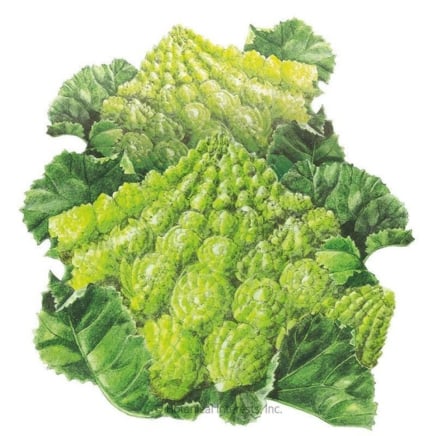As a small-scale vegetable farmer, I see the beauty in growing food every day. From seed to harvest, every stage is captivating in its own unique way. Watching seedlings emerge from the soil surface, seeing the stems grow thicker and stronger and true leaves appear, observing the changes they go through as they prepare to be transplanted, it’s all special.
Vegetables, when combined with shrubs, flowers, grasses, and trees, create a new level of beauty. Some look so appealing in your landscape that you might not want to harvest them!
Here are 15 beautiful vegetables with ornamental appeal, along with some specific variety suggestions for you to try.
Romanesco Cauliflower
Romanesco Cauliflower Seeds
Long Purple Eggplant
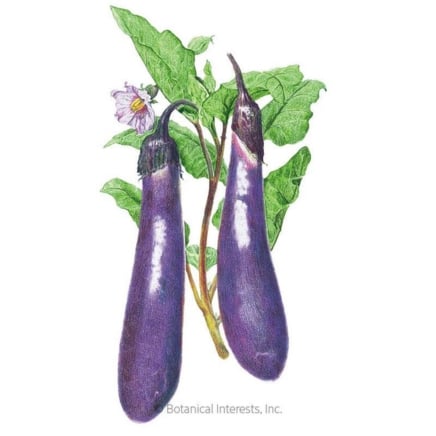
Long Purple Eggplant Seeds
Santaka Chile Pepper
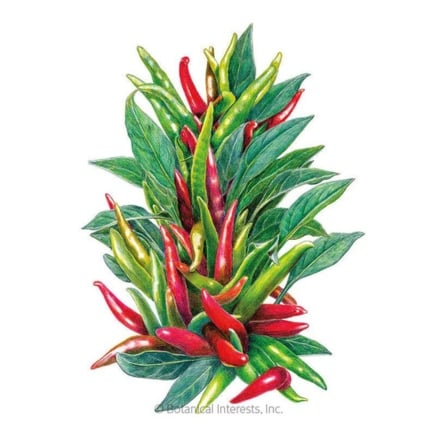
Santaka Chile Pepper Seeds
Romanesco Cauliflower
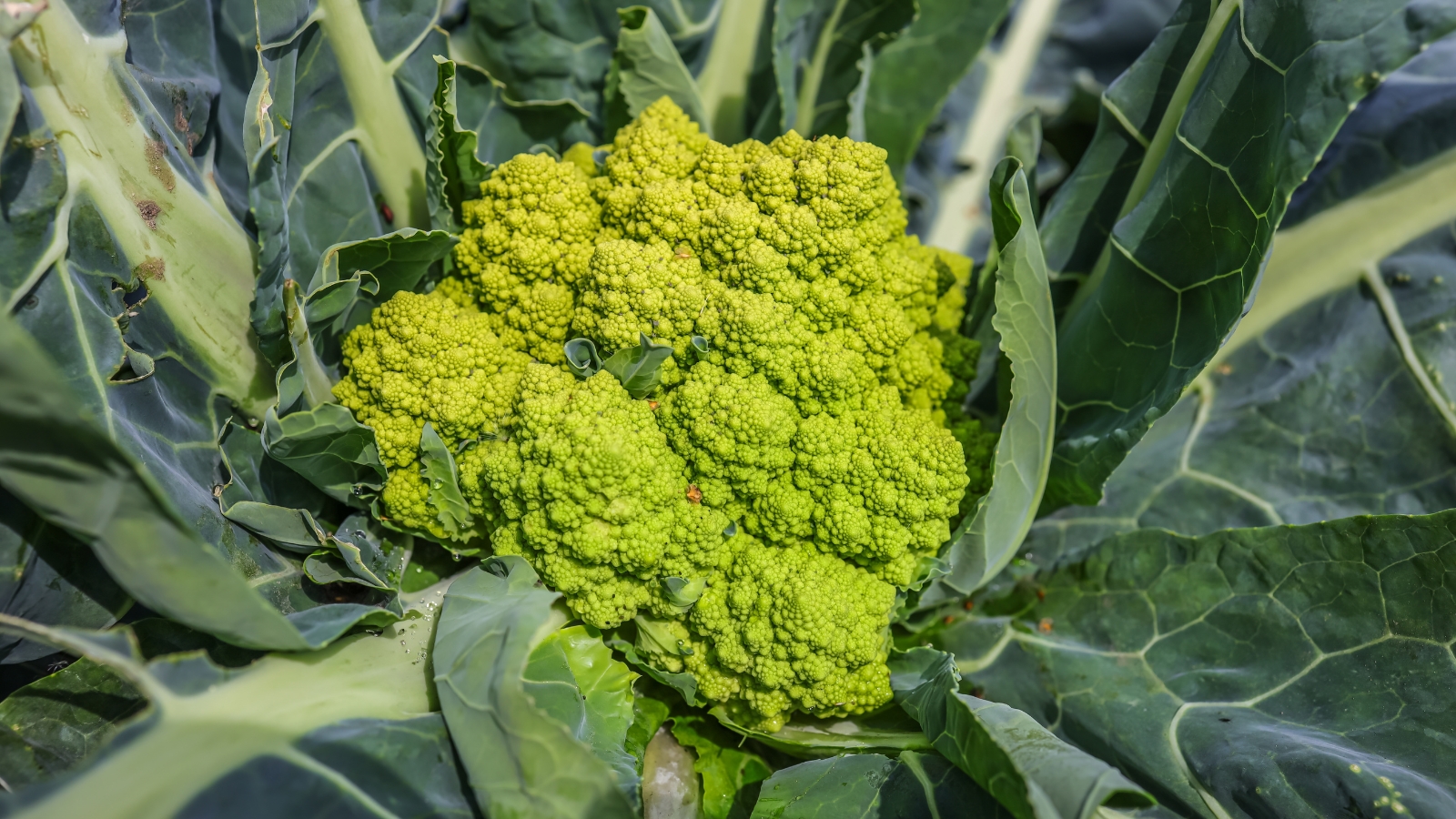
If you’ve ever seen Romanesco cauliflower, you know it’s one of the most interesting vegetables out there. Its unique and intriguing shape and spiraling patterns prove once and for all that Mother Nature is a true artist. This Italian heirloom is a mix of broccoli and cauliflower and has been around for centuries.
The lime green heads can be five to six inches across and have a nutty flavor when cooked. Line a garden border or walkway with a row to complement bright zinnias, salvia, or summer cosmos.
It takes 75-100 days to mature and is best sown and transplanted for a fall harvest. Hot weather may delay the development of heads.
Globe Artichokes
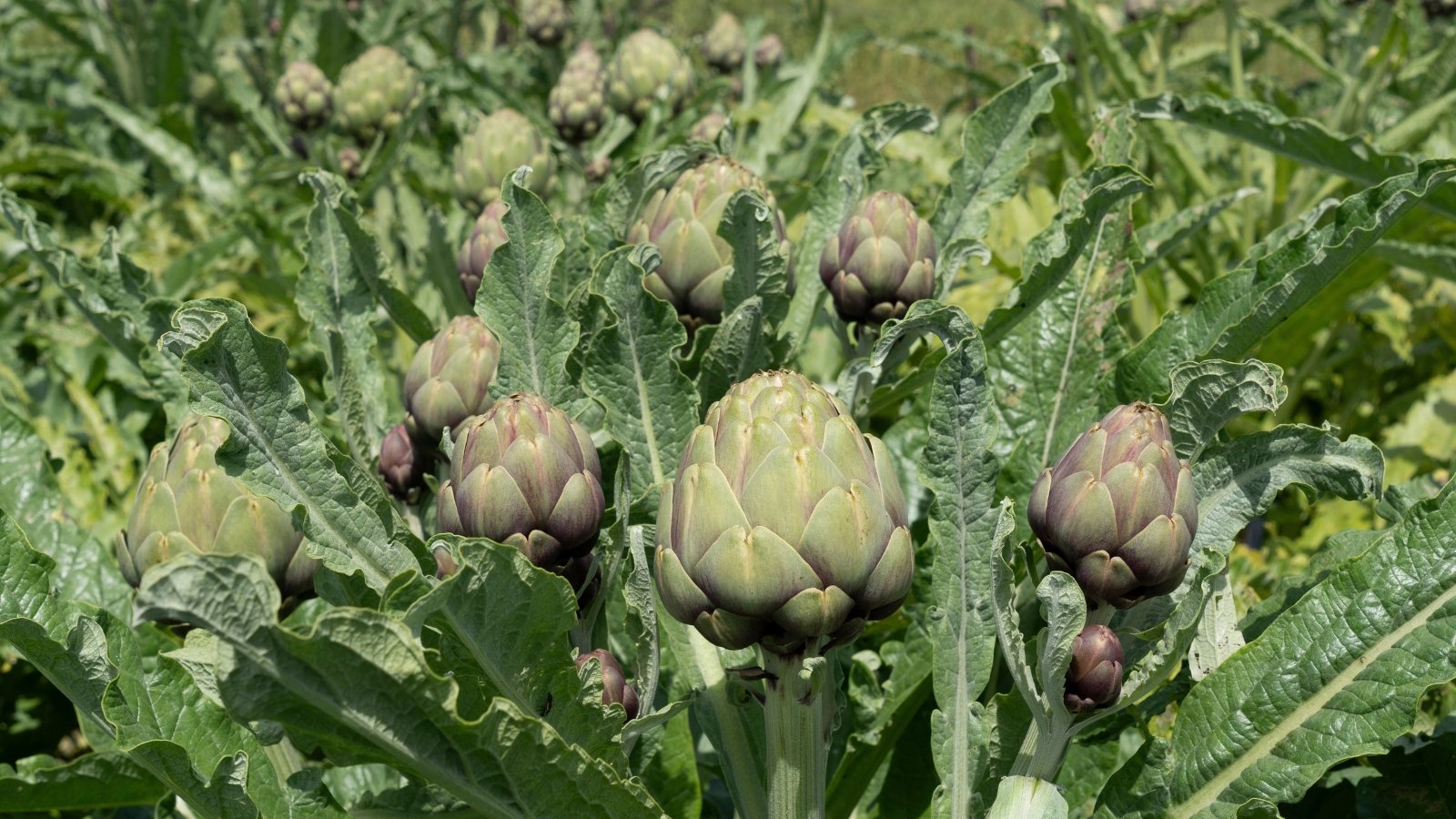
Globe artichokes are highly ornamental by nature, with their layered, jagged leaves, tall stems, and giant flower heads if left unharvested. These vary in bud size, height, color, and height, and all varieties will add a unique flair to your garden. Tips may have a purple or red tint, and the tallest varieties can reach upwards of eight feet, making an excellent border.
These warm-weather-loving vegetables prefer full sun and well-draining soil. Start them from seed, or check your local nursery for plant plugs. Split them into smaller clumps every four to five years to keep them from becoming invasive and to prolong their lifespan. Gift these to a friend or add more artichokes around your garden.
Harvest mature artichoke heads in mid-summer before they are fully open for the best texture and flavor. If left to flower, which requires a cold period, they expand like a blooming onion and produce a gorgeous purple thistle that can be left for ornamental appeal or dried and added to fall arrangements. Butterflies and bees will flock to the area.
Cut plants back in fall and mulch in colder regions. They may or may not survive winters depending on your region, but they can be grown as annuals everywhere.
Alliums
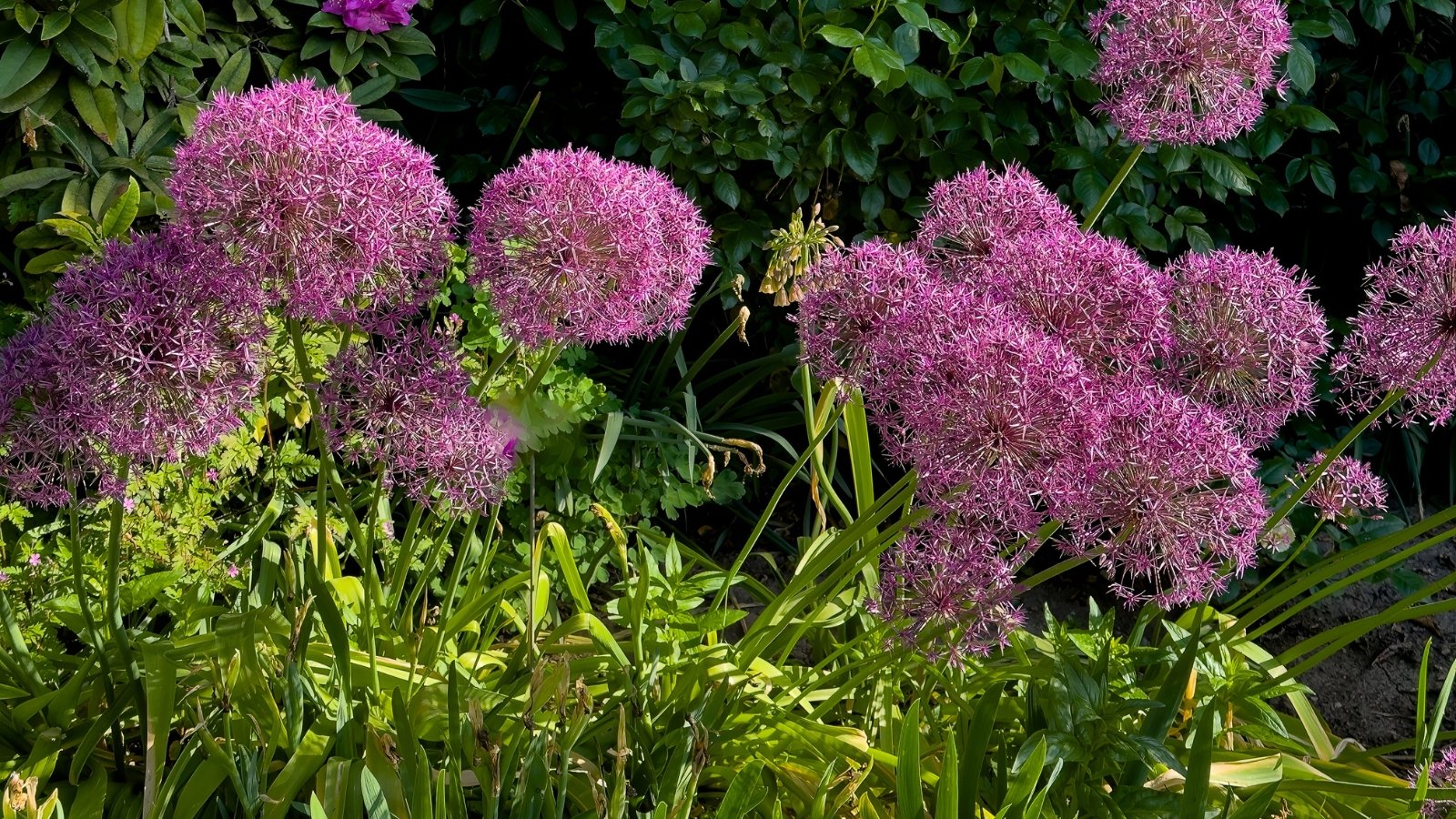
Alliums sporadically interspersed in flower gardens will add a pop of height, color, and interest. When fully mature, they pop off with fluffy, bright, white or lavender-colored seed heads that will eventually disperse their seeds into the wind. If you don’t want them to reproduce, simply cut the seedheads off before they develop seeds. Save them for later sowing or dry the entire head and use the stems as a funky accent in flower arrangements.
The ornamental variety ‘Purple Rain’ has six-inch round heads, grows to three feet tall, and has won the Royal Horticultural Society Award of Garden Merit. Plant these bulbs in fall and enjoy them as perennials in USDA zones 3 to 9. Their drought resistance allows them to be used in rock gardens, urban and cottage gardens, or garden borders.
Bonus: The strong garlic/onion aroma put off by alliums will keep deer, rabbits, and other rodents away.
Rainbow Swiss Chard
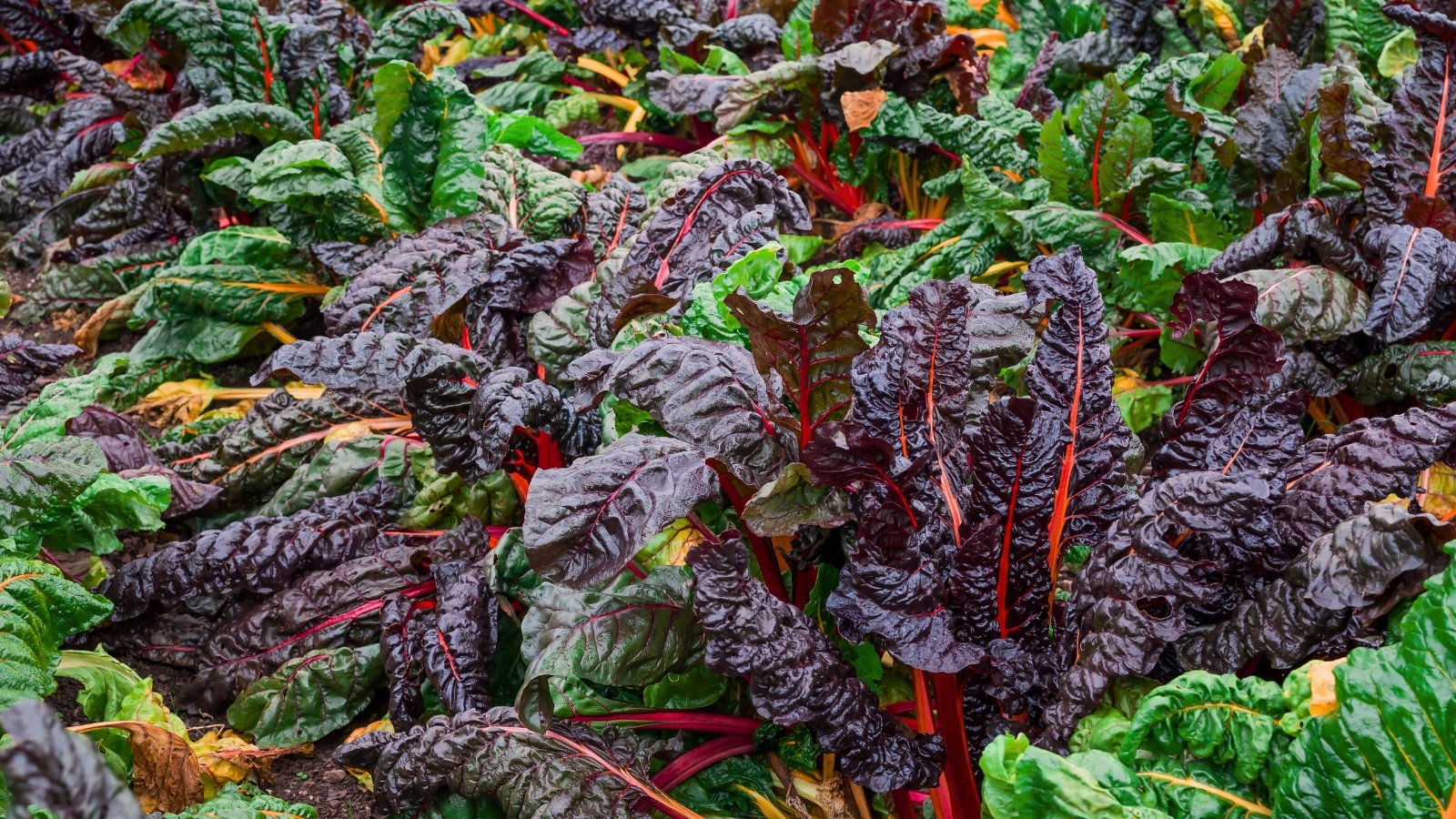
Rainbow Swiss chard is an awe-inspiring crop that makes you go “huh,” wondering how nature created something so beautiful. It is available in a mixed blend of white, yellow, pink, salmon, orange, and red stems, with corresponding veins and deep green, textured leaves. For a more deliberate pop of color, select ‘Ruby Red/Rhubarb’.
Swiss chard is sensitive to spring frost when it’s young, so delayed planting is recommended if you live in a colder region. Plants will go strong until a hard fall frost, providing high nutrition and lots of beauty all season. In areas with mild winters, chard can be perennial. Arrange it between low-growing pansies or sweet alyssum and tall sunflowers or artichokes.
Pro tip: Harvest them as young baby leaves to enjoy in early spring. Then, thin the plants to a foot and allow them to mature into full-size leaves to consume, enjoy aesthetically, or both! Full maturity takes about 55 to 60 days.
Kale
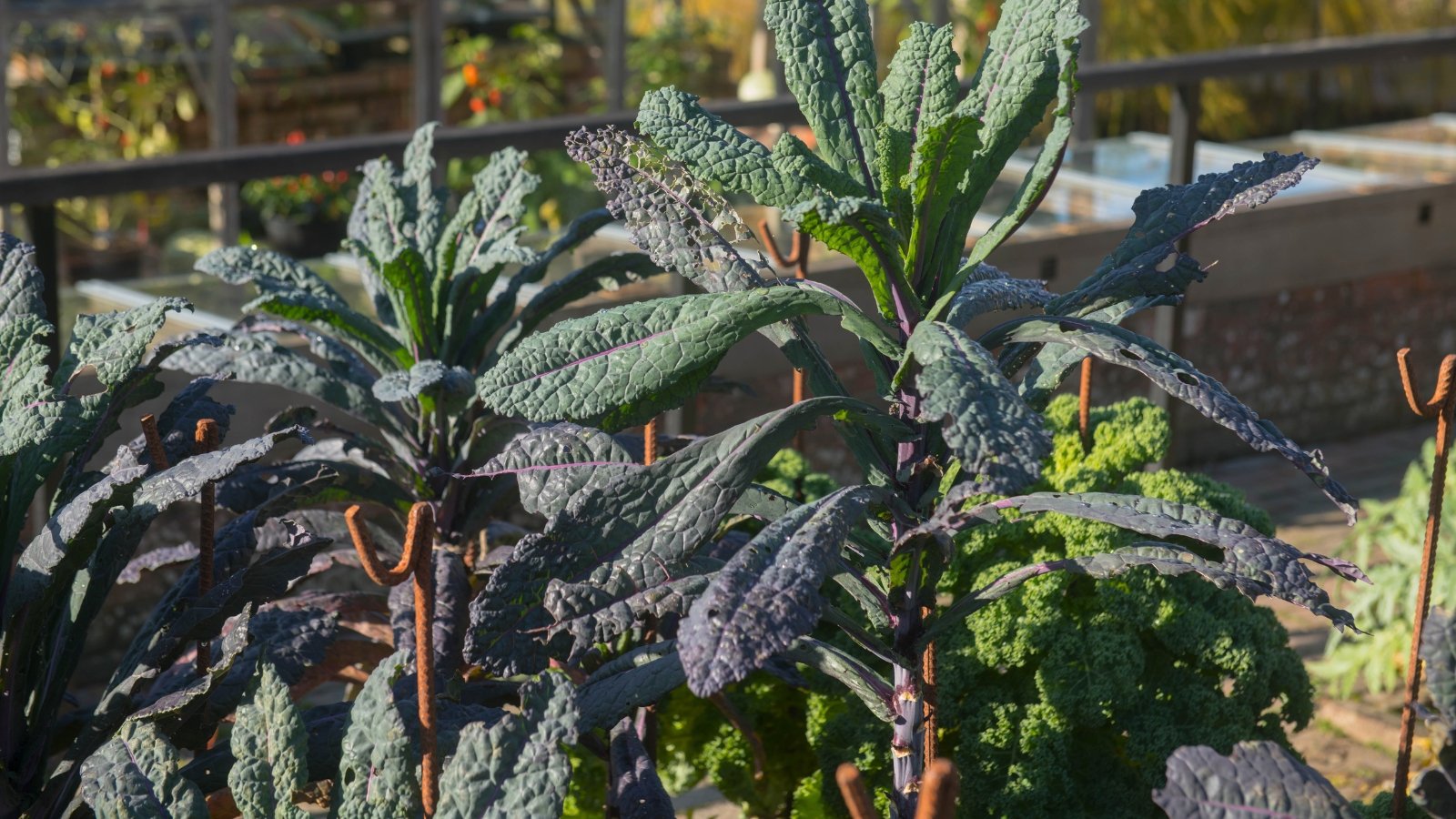
All varieties of kale are beautiful in their own way, but I’m a real sucker for ‘Dazzling Blue’ for its blend of medium and dark green, purple, and blue leaves, along with the striking pink veins and heavy texture. We eat with our eyes first, right?
Lacinato kale is great for salads and is jam-packed with nutrients. Enjoy baby greens early in spring and full-size leaves in about 60 days. Cover with insect netting to protect plants from caterpillar and flea beetle damage. Pick regularly for a continuous supply of cut-and-come-again kale.
Colder region growers should try ‘Dwarf Blue Curled Kale’ for fall and winter garden interest and extreme hardiness. This variety is perfectly sweetened after a frost. Add it to soups and stews, roast them into chips, or freeze it for later use. Try the robust and tender ‘Red Russian’ for a gorgeous flat-leaf variety.
Herbs
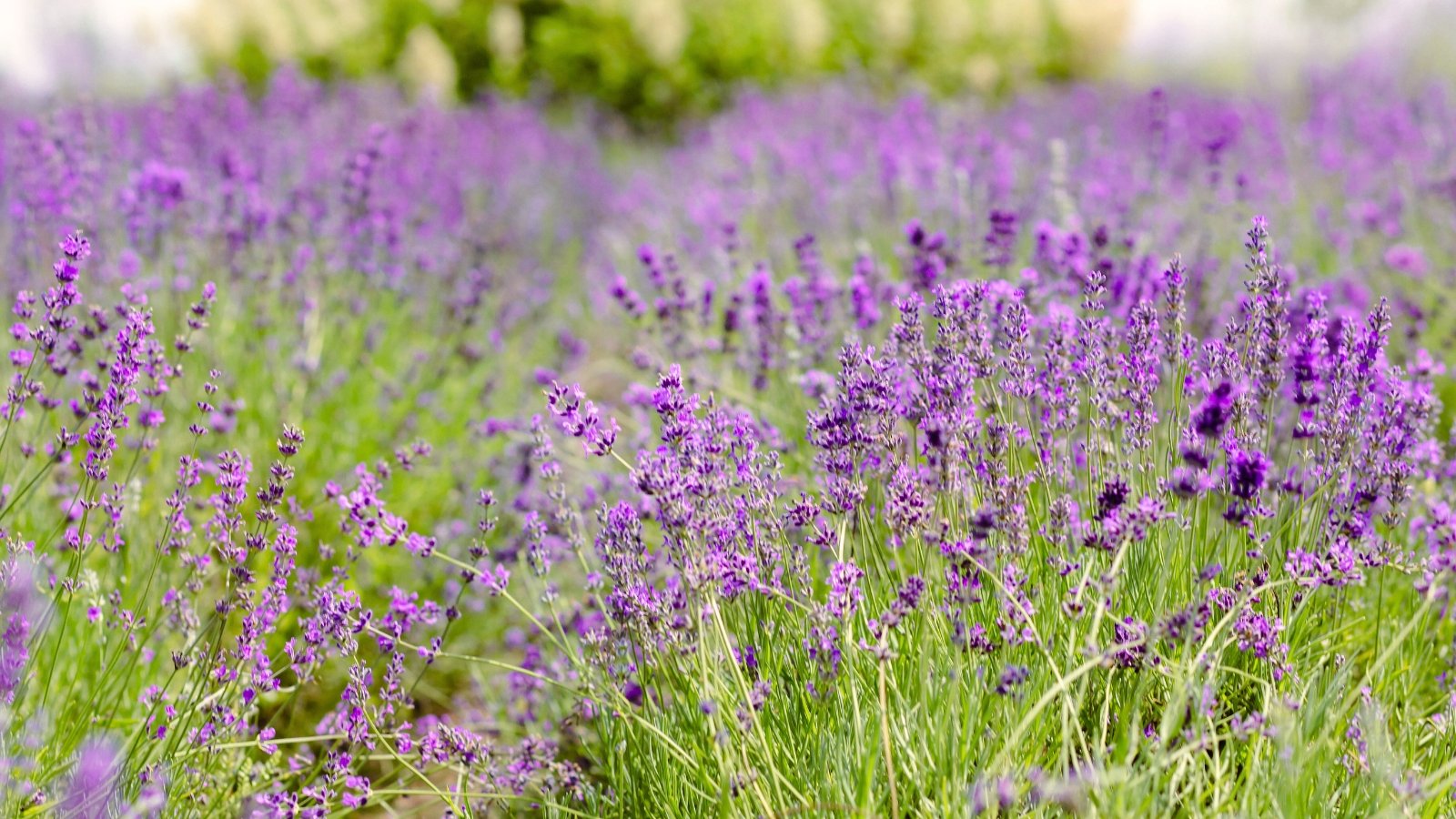
Herbs are a practical item for backyard gardeners to add to their plots, especially for cooking and preserving. But have you considered how beautiful they are when they go to seed? Some of my favorites to use in summer and fall bouquets are flowering dill, cilantro, mountain mint, and lavender. They each offer a unique flower, green leaf shade, and texture, along with an interesting fragrance you won’t find in grocery store bouquets.
You may have heard that strong, aromatic herbs may deter certain garden visitors that cause damage. Add a border of whatever herb you’ll use the most or whatever is most visually pleasing to you. Here are a few to play around with:
- Lavender and Russian sage: Fills space well, can grow to several feet, purple flowers.
- Rosemary: Once established, this hardy, low-maintenance shrub will grow as a perennial in USDA zones 7 to 11. It can grow up to four feet tall and makes a wonderful companion in landscaping. In colder regions, grow it in pots and bring it indoors for the winter.
- Basil: Choose from dark green, large leaves, deeply textured and frilled foliage, or compact and branched plants with purple or white flowers.
- Lemongrass: This gorgeous herbaceous plant will act as an ornamental grass in your landscape with the bonus of being a delicious culinary treat!
Cabbage
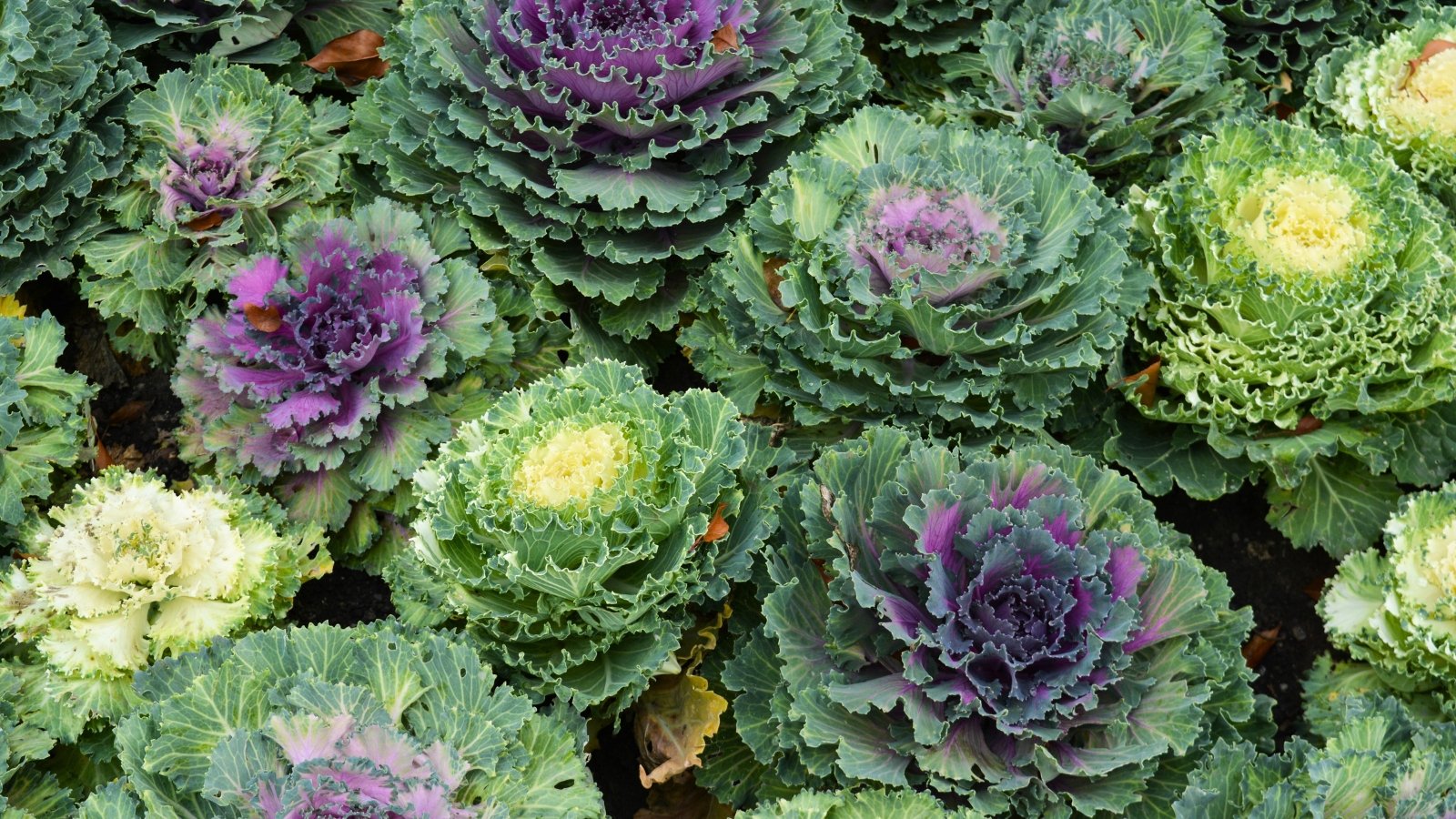
Intricate cabbage heads can be found on city streets, walkways, and in large pots in shopping centers all over America. They’re hardy, heat tolerant, and stunning with a long season.
There are specific ornamental cabbage varieties that, while of the same species as edible cabbage, are offered in a wider range of shape and color variations, making them a bit fancier. Often referred to as “flowering cabbage” as they’re less of a head and more a frilly flower that resembles cabbage, you can find these in white, green, red, purple, or a mix of several colors. ‘Pigeon White’ and ‘Tokyo Pink’ are two unique varieties that will stand out.
Flowering cabbage is the perfect thing to bloom alongside fall flowers and will hold up just fine as temperatures drop. Colors will intensify the colder it gets. If you prefer to grow edible cabbage, consider ‘Deadon’ for a moody garden or ‘Premium Late Flat Dutch’ for a massive, stunning storage cabbage.
Eggplant
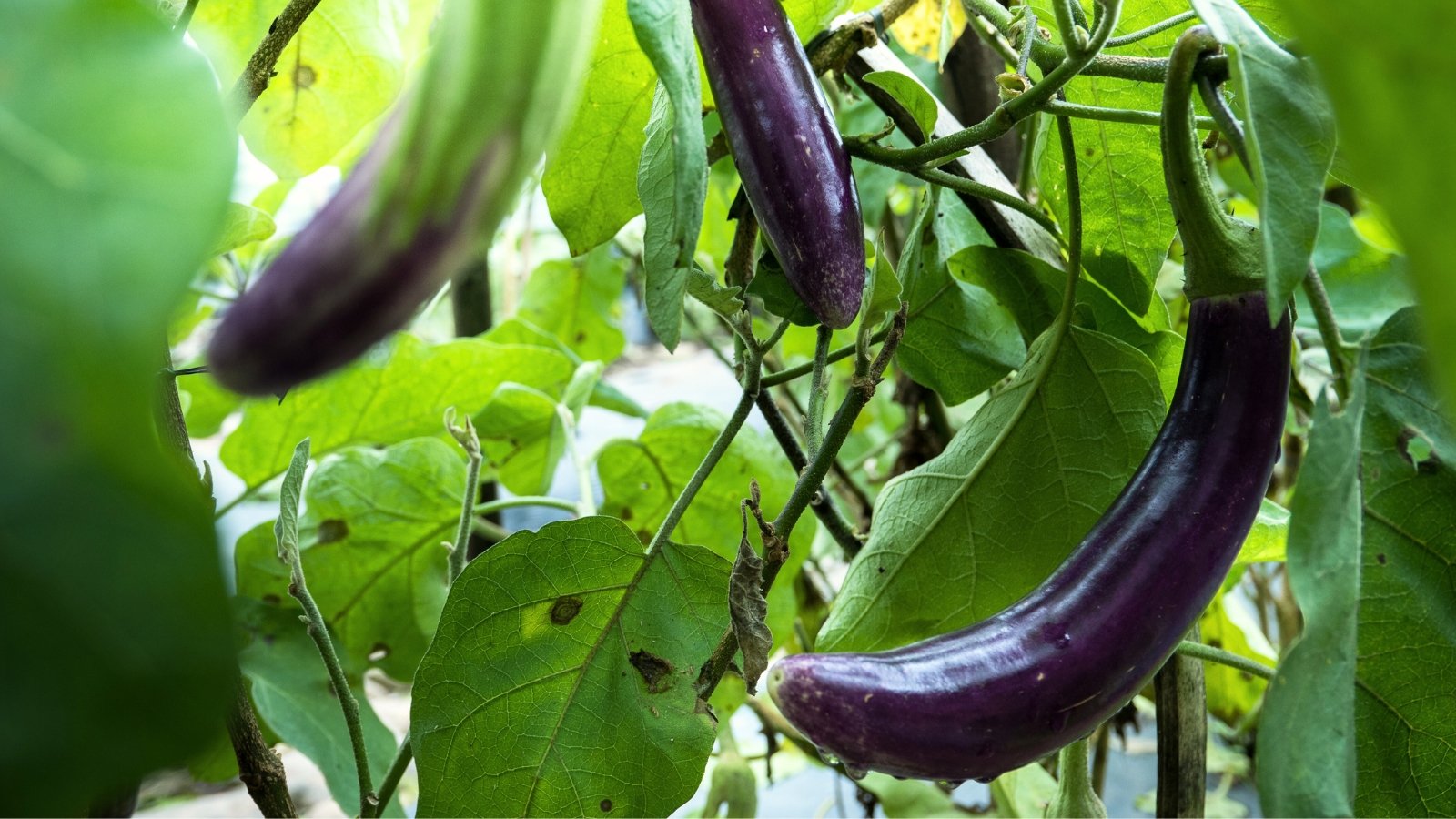
There’s a saying, “Eat the rainbow,” and it’s not just for kicks. Varying the food pigments in your diet ensures you’re receiving all the diverse nutrients they each offer. Purple foods contain anthocyanidins, powerful antioxidants that protect our cells from oxidation and damage caused by free radicals. Anthocyanins have anti-inflammatory properties. Studies show that they are also antimicrobial and may prevent cardiovascular disease, diabetes, and certain cancers.
Healthy purple foods include sweet potatoes, berries, and, you guessed it, eggplant. The unique shades of purple that different varieties of eggplant offer are not just good for our bodies; they also provide immense beauty in our gardens with their fruits and flowers.
You may be familiar with globe eggplant, but try also experimenting with planting slender Japanese or tiny fairy tale varieties. Small eggplants remain tender with few seeds, perfect for summer grilling.
Sugar Snap Peas
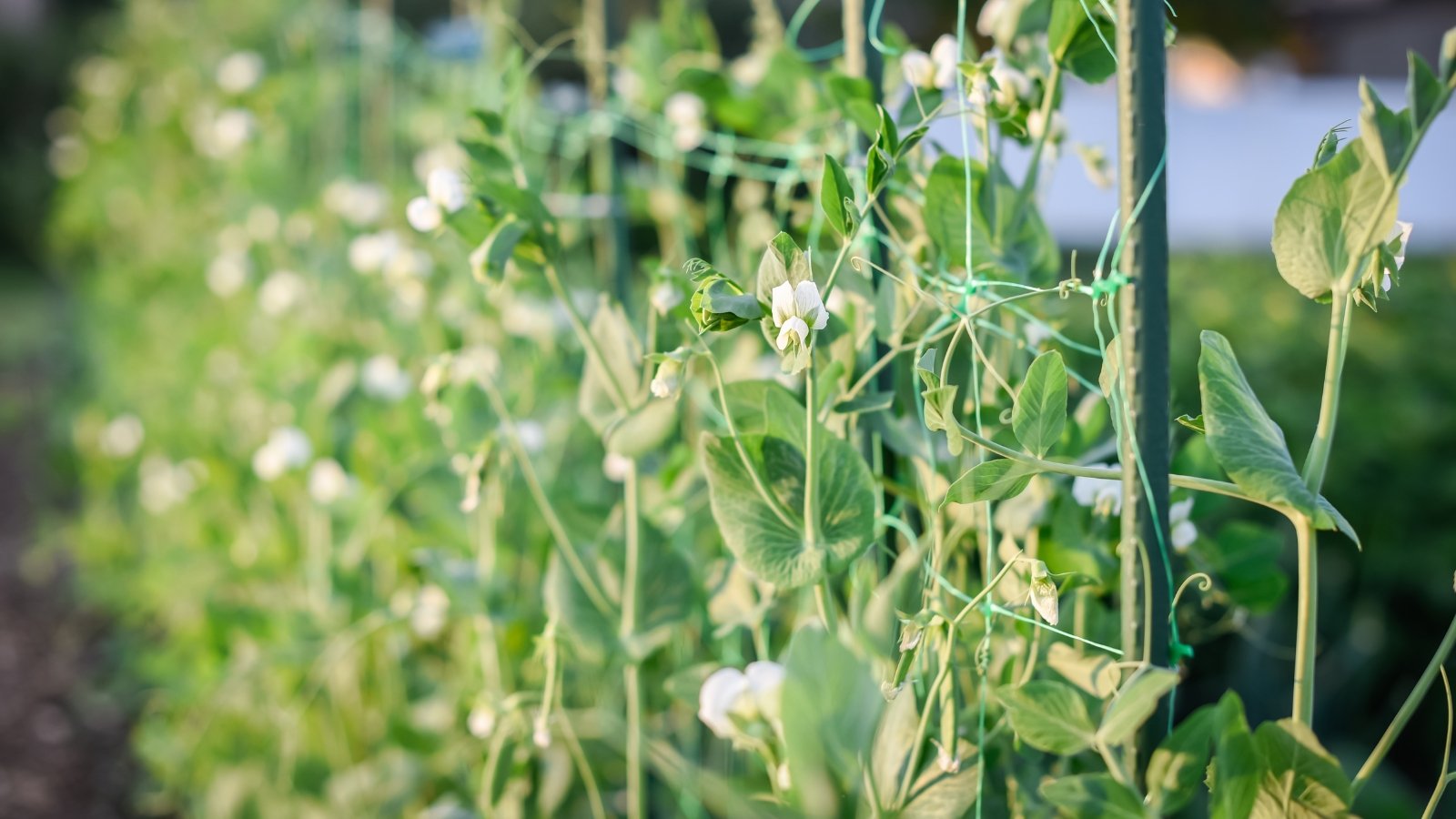
We grow sugar snap peas in a high tunnel on a six-foot tall fence that’s trellised to our support bars, creating a lush wall of crisp white flowers and light green foliage. If you have a south-facing fence or wall, install a trellis fence and make snap peas the edible backdrop of your ornamental garden.
This wall of peas will look lovely and add uniqueness to your plot. When they’re spent, snip the plant just below the soil surface, leaving the roots in the ground. The peas will affix nitrogen to the soil, boosting your future garden’s fertility. Try a purple variety like ‘Sugar Magnolia’ for a unique flair and pink flowers. Peas will mature in 70 days.
The sheer volume of pea flowers will surely attract beneficial insects and pollinators to your yard. Increased pollination means more production, and who doesn’t want that?
Peppers
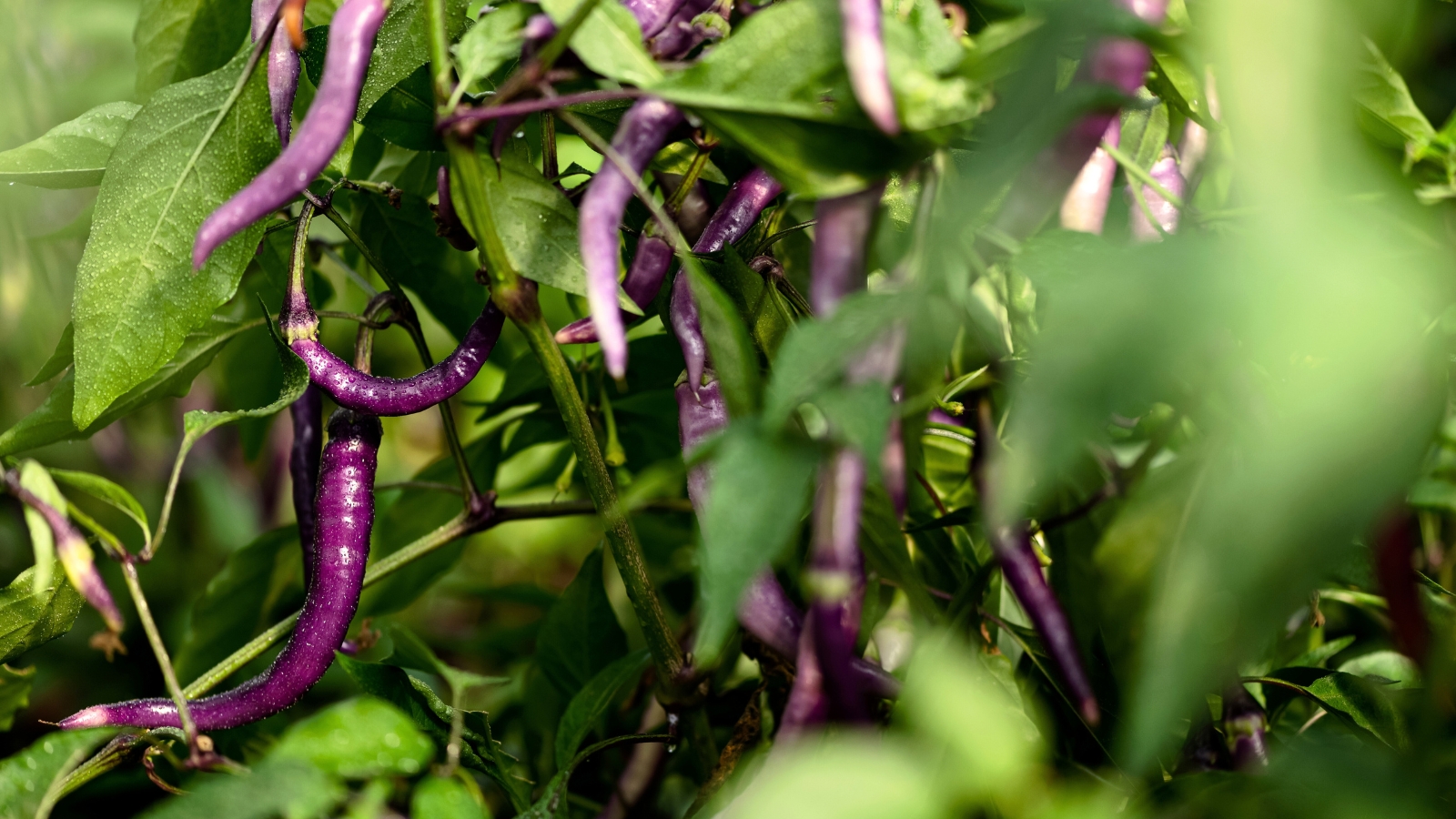
Peppers are gorgeous throughout their maturing stages, transitioning from green to yellow to their fully mature color, which could be purple, brown, red, or orange.
Some of my favorites:
This lantern-shaped habañero pepper is a slightly wrinkled, bright medium-orange whose plants can reach four feet. The heat is minimal, but the flavor is intense with a tropical pineapple aftertaste. Plants will be chock full of fruits in late summer.
These are extremely hot peppers popular in Japanese cuisines, like soups and stir-fries. Keep them in the garden as eye candy if you’re not into that! When the plant is full of a mix of yellow, green, and red peppers, it resembles a garden firework and looks cool along a border.
This variety starts out having green stripes that turn white when mature, a semi-rarely occurring color in the vegetable world.
For a real treat, add this rare pepper that transitions from deep violet to brown to pink to red when mature. They’ll perform well in pots and fabric grow bags.
When deciding where to place your pepper plants, check seed packets for height requirements. If needed, support them with a trellis system or naturally with strong shrubs. Parsley, dill, and cilantro make great companions for peppers.
Red Lettuces
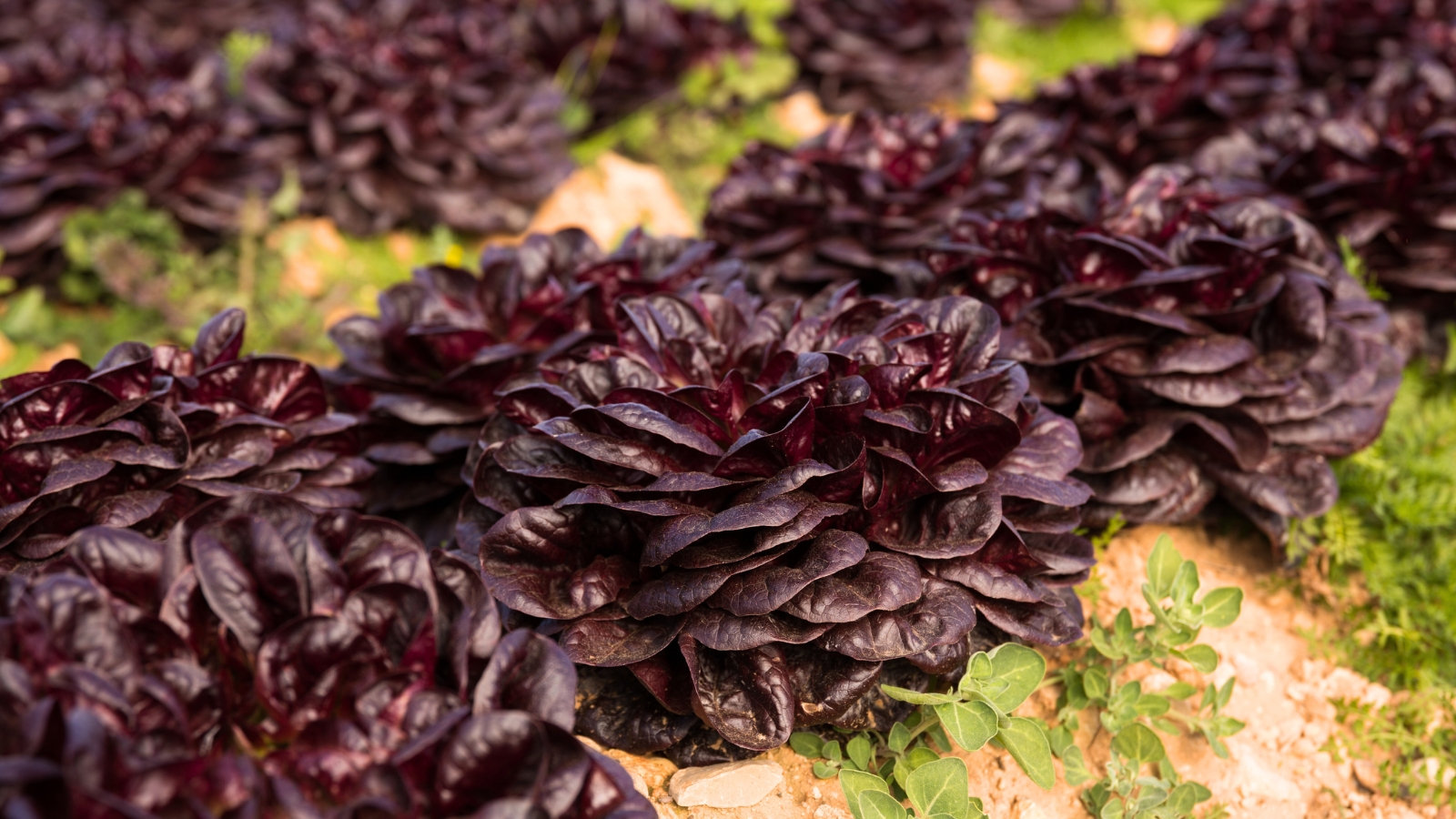
Lettuce is a staple in the home garden. They mature fairly quickly so you can grow a range of varieties each season in successions for a different look and various flavors. If you leave them to flower, they look exception too!
Some of my favorites:
- ‘Rouge d’Hiver’ is a French heirloom known for its buttery flavor and bronze leaves. It’s best for a fall harvest.
- ‘Dark Roden’ leaf lettuce is a glossy deep burgundy, perfect for a moody garden. It grows upright and strong, vase-shaped. When harvested, you’ll see the green hearts, making for an interesting salad.
- ‘Hyper Red Rumple Waved’ looseleaf lettuce is a gorgeous, deeply savoyed and ruffled red romaine best for cool weather.
Green lettuces are lovely as well, but red lettuce adds a nice contrast to all the usual greens and blues of the lettuce world. Try some new ones on for size.
Beets
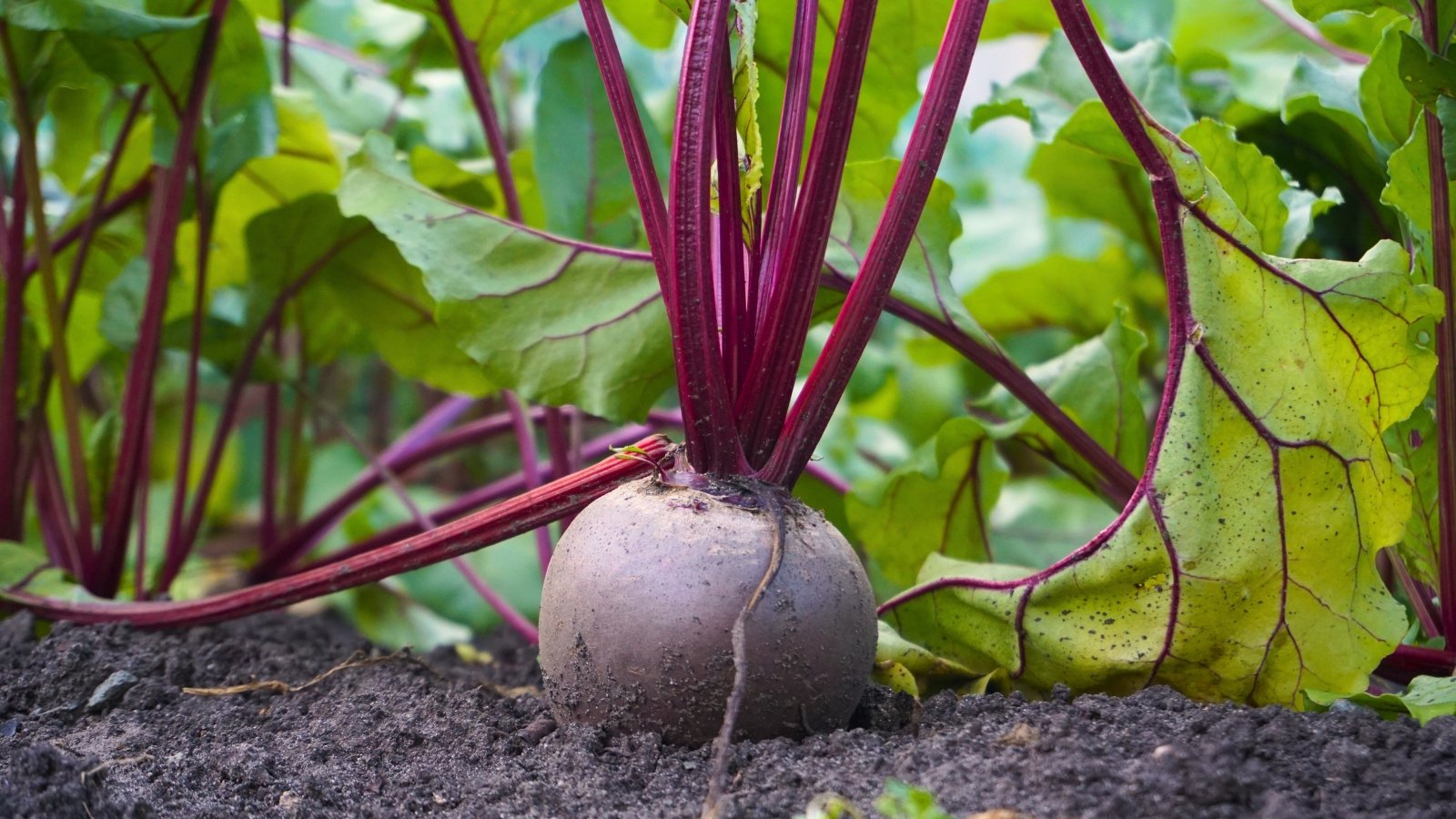
Beets look similar to Swiss chard as they’re part of the same family. Red beets boast large, deep green leaves with deep pink veins, golden beets feature light green leaves with yellow stems and veins, and Chiogga beets have medium green leaves with white stems and veins.
Direct sow these after the risk of frost has passed in spring. Thin them to be spaced at three to four inches so they can bulb out properly. Extra boron may be needed to keep their leaves from developing brown spots.
Beets will keep in the ground for a while so you can enjoy their beauty into fall; you’ll have storage beets at that point. Don’t forget, the greens are edible and highly nutritious too.
Squash and Gourds
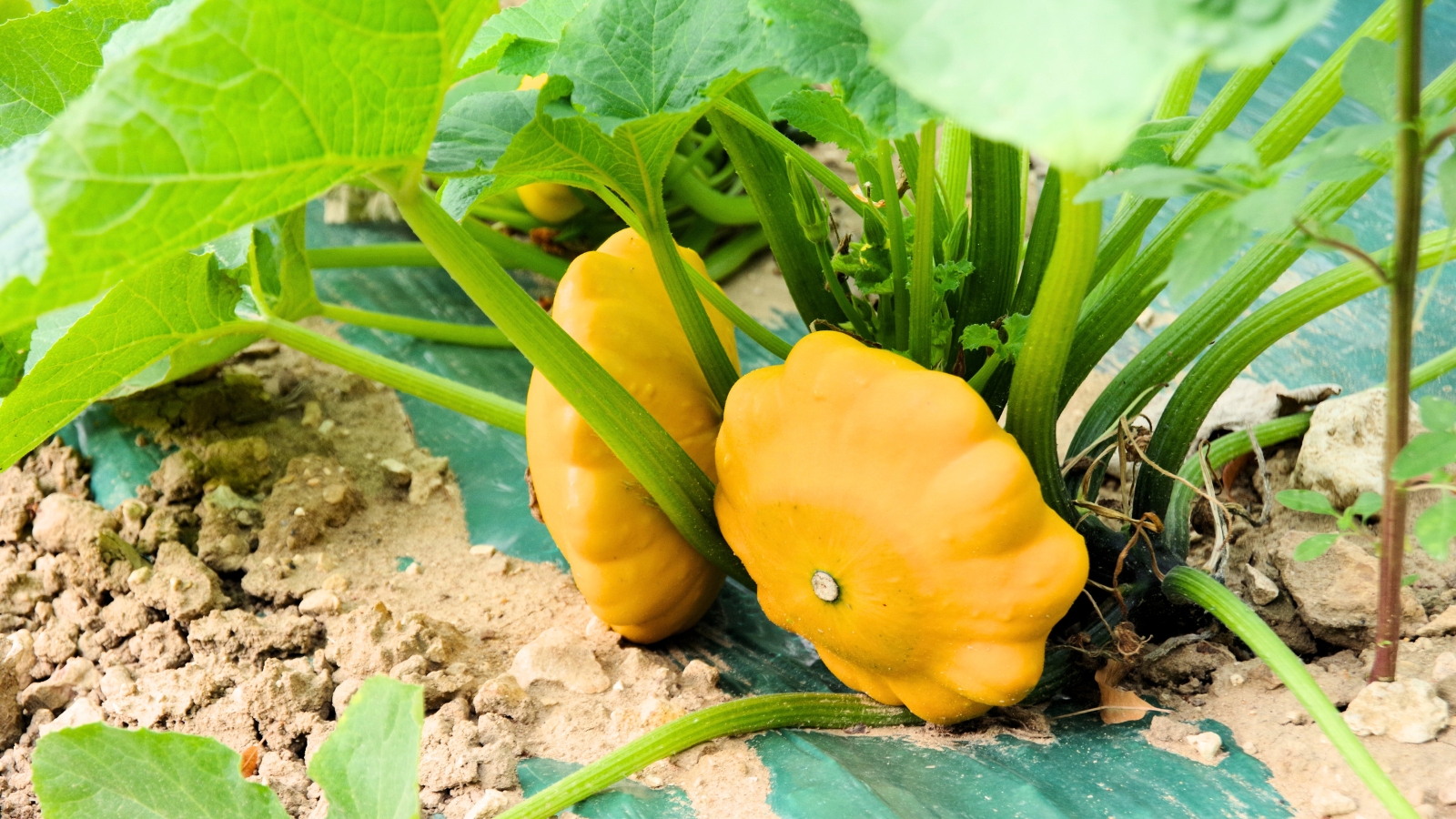
If you can keep the cucumber beetles and squash bugs away, you’ll be rewarded with stunning flowers and lovely fruits of squash and gourds. I love growing patty pan summer squash and harvesting them small so they remain buttery smooth with little to no seeds. The plants are large and in charge, minimizing weed pressure and providing shade coverage for radishes and lettuce during the peak of summer.
There is such a range of color and size options when it comes to squash and gourds that you can try something new each season. Go with the bright yellow of spaghetti squash or the deep green of classic acorn squash.
Other great ornamentals include ‘Blue Hubbard’ squash, ‘Delicata’ winter squash, and ‘Carnival’ pumpkins. These can enjoyed visually in the garden or after harvest and cure. After they’re used as decoration, you can bake or roast them into something delicious to boot!
Mizuna
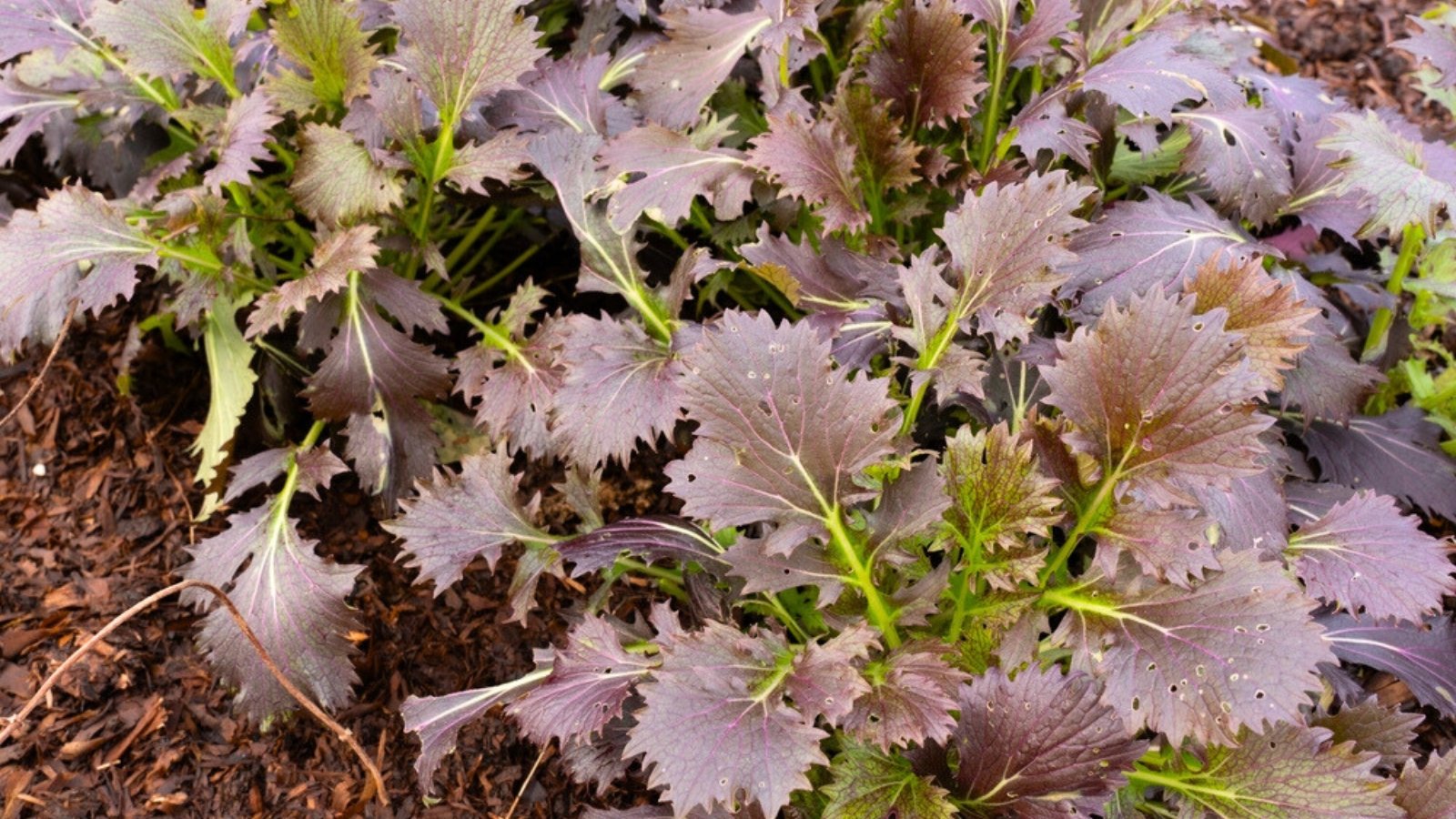
Arrange the tall spikes of Japanese mustard, or mizuna, into rows or between other annuals for some visual interest. ‘Mizuna Mustard’ from Botanical Interests matures in 30-50 days and grows best in full sun to partial shade. It will grow to 12 inches and remain in the garden through frost.
If you want to go crazy, try ‘Japanese Pink’ mizuna, which has a striking neon purple stem and dark green leaves with purple veins. It grows in large heads with a strong taproot. Leaves can be individually harvested to continue enjoying the plant visually while also taking advantage of its antioxidants and overall nutrition.
It’s low-maintenance and easy to grow. The best part is you can eat it in fall after you’ve enjoyed it all season!
Heirloom Tomatoes
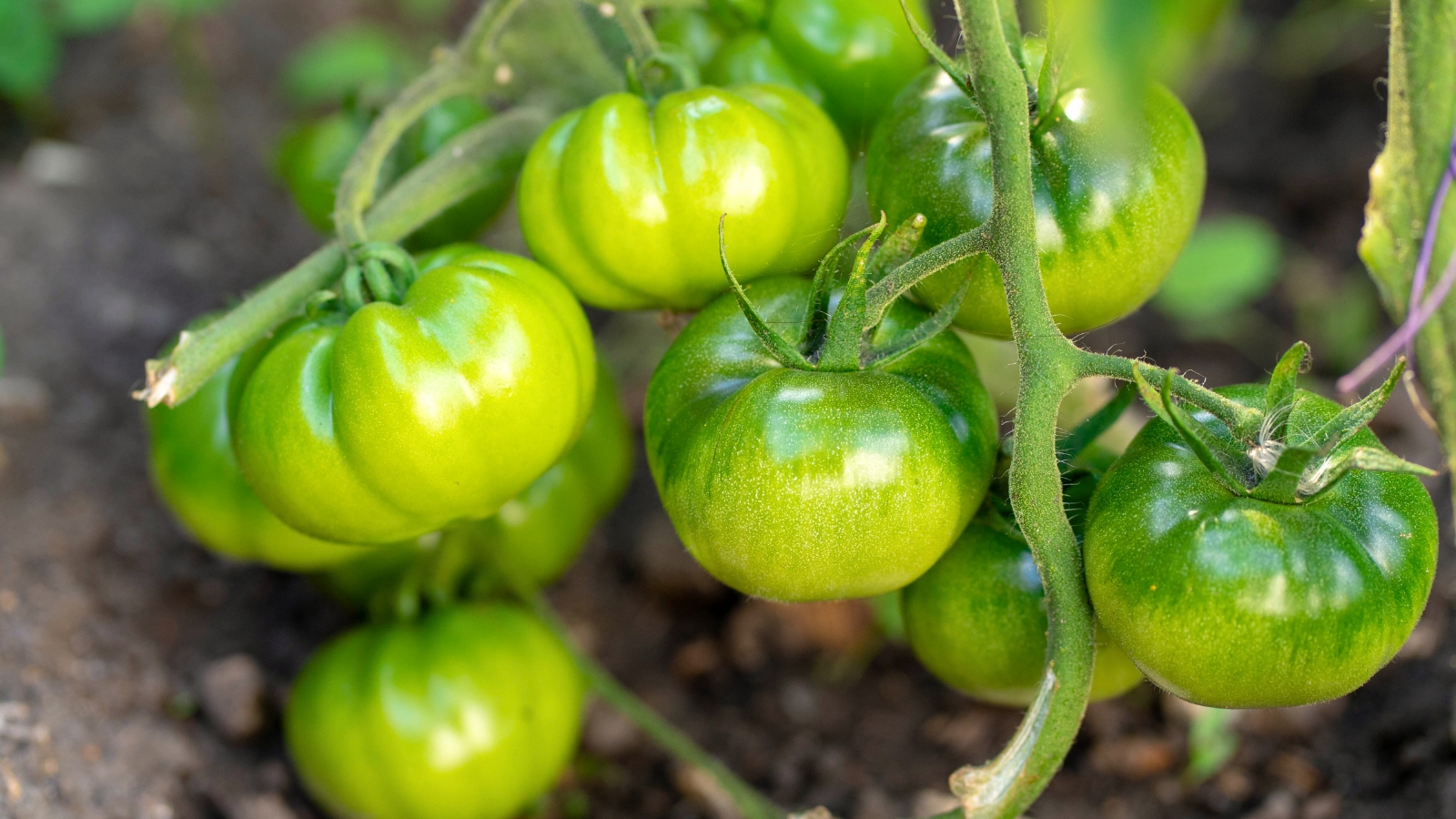
I’ve stared at heirloom tomatoes before in such awe for their awesome color variations, size, and extreme beauty, and I’m sure you may have, too. Consider adding some new varieties for ornamental purposes this season.
Some of my favorites:
This monster of a tomato can weigh up to two pounds each. They are marbled yellow and reddish-orange, juicy and meaty with few seeds inside, and extremely balanced in sweetness and acidity.
This unique heirloom will surely elevate your caprese salads a few notches. It’s well-balanced and firm but still sweet and juicy. The fruits remain consistently sized with little cracking.
This is a classic choice with a good balance of sweet and tart. Brandywines are flat by nature and blush red with lighter shoulders.
If you want high productivity, increased vigor, and less cracking along with consumption, you may try your hand at grafting tomatoes!
Final Thoughts
Nature provides us with such beauty, especially when it comes to food. What’s more amazing than a plant that provides our soil with coverage, fills our hearts and gardens with joy, and our bodies with nourishment? I hope you found a vegetable or two on this list that you’ll add to your garden this year as an ornamental.

